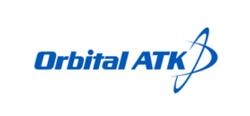Sat, Apr 11, 2015
Orion Launch Abort System Design Features Advanced High Thrust Steering Control System
Orbital ATK has signed a $90 million contract with Lockheed Martin to provide the Attitude Control Motor (ACM) for Orion’s Launch Abort System (LAS). The LAS enables the astronaut crew to safely escape in the event of an emergency during launch, as the capsule is jettisoned away from the launch vehicle.

The Orion spacecraft, designed and built for NASA, will transport astronauts to destinations in deep space — and return them safely back to Earth.
"Orbital ATK is honored to be a major contributor to the Orion team, and our Elkton team is very proud of their contributions to the Launch Abort System," said Cary Ralston, vice president and general manager of Orbital ATK’s Missile Products division of the Defense Systems Group. “Orion represents the future of manned spaceflight, and will take humans deeper into space than ever before. Working with Lockheed Martin and NASA, Orbital ATK is committed to making spaceflight safer than ever before for our astronauts.”
“Orbital ATK’s continued support to NASA demonstrates our long-standing commitment to our nation’s human spaceflight program,” said Mike Kahn, president of Orbital ATK’s Defense Systems Group. “This critical work supporting Lockheed Martin on the Orion program recognizes our long history of safety, reliability and innovation.”
The ACM provides the steering controls to the LAS, using a solid propellant gas generator with eight proportional valves equally spaced around its 3-foot diameter to steer Orion as it moves away from the launch vehicle. The motor can exert up to 7,000 pounds of steering force in any direction.
To date Orbital ATK has performed several successful ground tests on the ACM, provided a working unit for the successful pad abort test in 2010, and supplied the inert unit which flew as part of Orion’s first test flight, Exploration Flight Test-1 in December 2014. The ACM adds to Orbital ATK's contributions to the LAS, which already includes the primary launch abort motor and the initial system design and engineering.
More News
During The Forced Landing, The Airplane’s Float Struts And Spreaderbars Collapsed Analysis: While en route to a remote fishing lodge in a float-equipped airplane, one of the >[...]
"X-59 is a symbol of American ingenuity. The American spirit knows no bounds. It's part of our DNA – the desire to go farther, faster, and even quieter than anyone has ever g>[...]
Aero Linx: The Honourable Company of Air Pilots The advancement of the public interest by the promotion of safety for all those who are employed in connection with or who travel by>[...]
Minimum Friction Level The friction level specified in AC 150/5320-12, Measurement, Construction, and Maintenance of Skid Resistant Airport Pavement Surfaces, that represents the m>[...]
Aero Linx: Aerospace Industries Association (AIA) For over 100 years, the American aerospace and defense industry has shaped the world around us. From the first flight to the moon >[...]
 NTSB Final Report: Dehavilland DHC-2 MK 1
NTSB Final Report: Dehavilland DHC-2 MK 1 Aero-News: Quote of the Day (10.29.25)
Aero-News: Quote of the Day (10.29.25) ANN's Daily Aero-Linx (10.29.25)
ANN's Daily Aero-Linx (10.29.25) ANN's Daily Aero-Term (10.30.25): Minimum Friction Level
ANN's Daily Aero-Term (10.30.25): Minimum Friction Level ANN's Daily Aero-Linx (10.30.25)
ANN's Daily Aero-Linx (10.30.25)



